As digital signage grows in popularity, understanding the LED screen structure becomes crucial for users, integrators, and project managers. Whether you’re planning an outdoor billboard or an indoor retail display, knowing how the screen structure works helps ensure you choose the right system for durability, performance, and cost-efficiency.
In this guide, we break down every layer and screen component that makes up a modern LED display structure, including LED modules, control systems, steel framing, and more.
What Is an LED Screen?
An LED screen is a visual display that uses light-emitting diodes (LEDs) as pixels to create images and videos. It is made up of many screen components, such as LED modules, a control system, power supplies, and a steel structure for LED screens or cabinet housing. These displays are used in various environments—from concerts and exhibitions to highway billboards and shopping malls.
Unlike LCD or OLED screens, LED displays are modular, scalable, and highly customizable in shape and size. The structure of an LED screen plays a key role in its brightness, performance, and longevity.
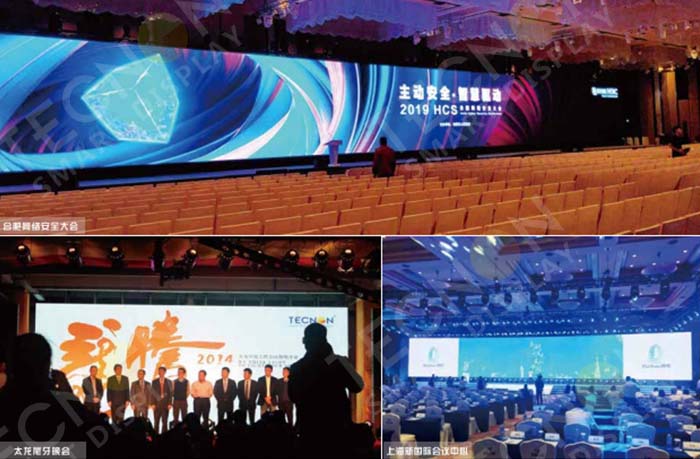
Core Components of an LED Display
Let’s look at the major LED screen components that form the foundation of the screen’s function and performance.
LED Modules
The LED module is the core visual unit of an LED screen. It includes:
- PCB (Printed Circuit Board): Holds and connects the LEDs and integrated circuits.
- LEDs: The light source that displays the image.
- Driver ICs: Manage the brightness and color of each LED pixel.
- Mask/Protective Cover: Adds durability and improves contrast.
Each module is a functional screen layer that can be replaced or serviced without removing the entire display.
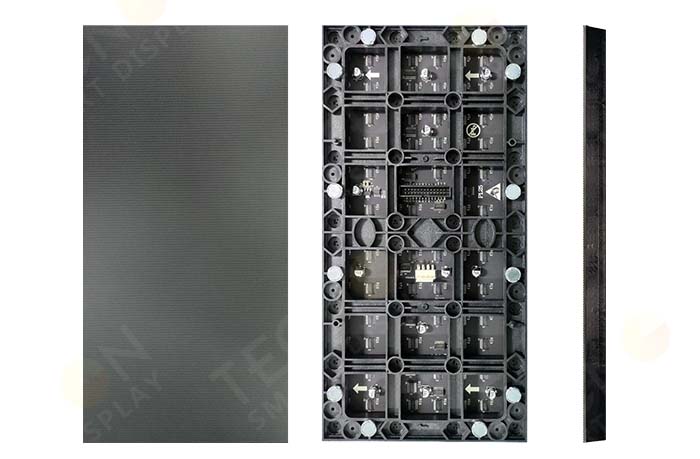
Power Supply Unit
Power supplies regulate electricity, typically converting 220V AC to 5V or 12V DC for LED operation. High-quality power units help protect against voltage fluctuations, which could damage sensitive screen components.
Control System
The control system—often made up of a sending card, receiving card, and sometimes a central controller—manages content playback. It ensures the LED modules display content in the correct order and at the right resolution.
Video Processor (Optional)
In professional setups, a video processor enhances input signals and allows for multiple content sources. It also enables split screens, scaling, and image enhancement.
Content Source & Software
Media players, cloud CMS systems, and USB-based content sources feed the screen with visuals. This is a vital screen component, especially for commercial LED signage that requires scheduled playback or live updates.
LED Display Cabinet Structure
The LED display cabinet houses the LED modules and all internal components. It plays a vital role in the screen structure, offering physical protection and ensuring stable performance.
Cabinet Frame
This is the external structure, often built from die-cast aluminum, steel, or carbon fiber. The LED display frame determines the overall durability and weight of the screen. Outdoor displays need corrosion-resistant and weatherproof frames, while rental LED screens use lightweight frames for easy transport.
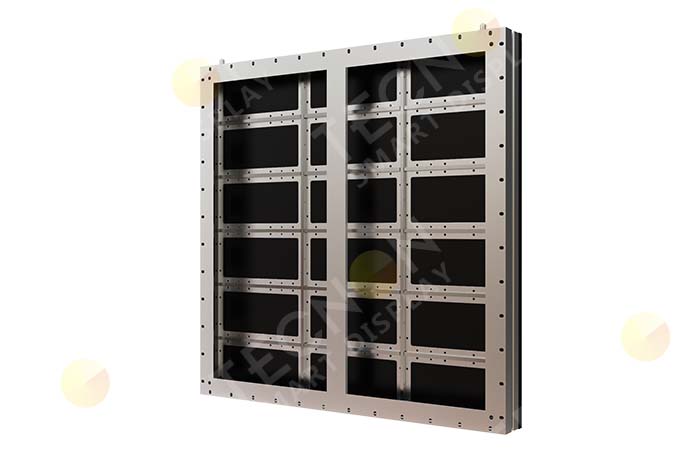
LED Panels / Modules
These are mounted on the cabinet face. High-precision alignment is key for seamless visuals. Most cabinets allow easy replacement of modules for maintenance.
Internal Wiring & Cable Management
Efficient internal wiring reduces the risk of power loss or signal failure. Depending on the screen structure, wiring may be internal (for neatness) or external (for quick troubleshooting).
Cooling Mechanism
Heat buildup affects brightness and lifespan. Cabinet structures usually include cooling fans, heat sinks, or natural ventilation layers to manage internal temperatures.
Waterproofing & Sealing (Outdoor Use)
Outdoor LED cabinets include rubber gaskets, sealed connectors, and IP65-rated materials to protect against water and dust.
Additional Components
Beyond the display cabinet, several other parts contribute to the full LED screen structure.
Installation Bracket / Structure
The screen requires a steel structure for LED screens to mount it securely. These supports vary by use case:
- Wall-mounted
- Pole-mounted
- Ceiling-hung
- Trailer-based (mobile screens)
The design of this screen element must account for weight, wind resistance, and site-specific safety codes.
Signal Transmission System
Modern LED screens use Ethernet cables, fiber optics, or wireless transmission to relay data. Redundant setups ensure content continues displaying even if one signal path fails.
Monitoring & Control Software
Many LED systems now support remote diagnostics. Operators can monitor power usage, temperature, and signal status, allowing proactive maintenance.
Cards and Connectors
These include signal cards, receiving cards, and interface connectors. They’re essential screen components for data flow and system stability.
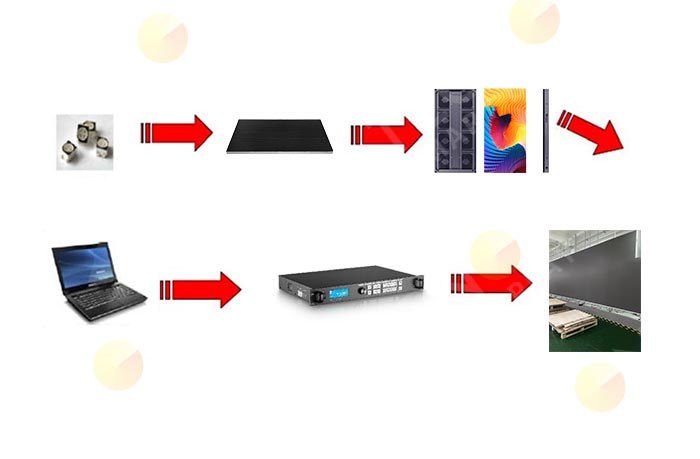
Types of LED Display Cabinets
Understanding cabinet types helps you choose the best LED screen structure for your application.
By Application
- Indoor: Lightweight, lower brightness, closer pixel pitch.
- Outdoor: Waterproof, high-brightness, durable.
- Rental: Modular, fast-locking, easy to transport.
- Fixed Installation: Strong frame, long-term usage.
By Maintenance
- Front Maintenance: Module access from the front—ideal for tight spaces.
- Rear Maintenance: Modules accessed from the back—common in open installations.
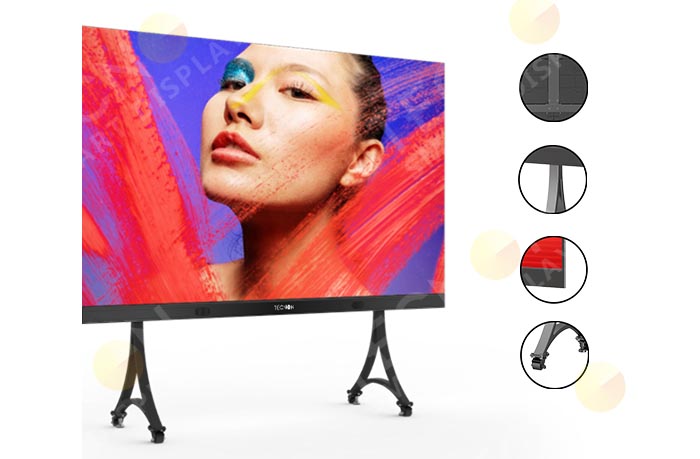
Assembly and Integration Process
A well-assembled LED display structure ensures safety, performance, and longevity.
How to Assemble an LED Display
- Set up the steel structure or base bracket.
- Mount the cabinet or modules.
- Connect power and signal cables.
- Configure control systems.
- Test content display and brightness.
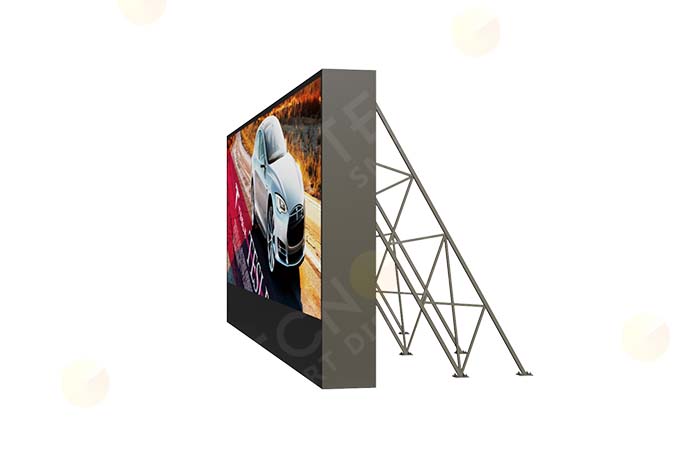
Precision in Module Alignment
Tiny misalignments affect image quality, especially in fine-pitch screens. Precision tools and professional installers ensure tight module joins and even light distribution.
Testing and Quality Control
Before activation, run checks on:
- Power voltage
- Signal integrity
- Brightness and color accuracy
- Environmental resistance (for outdoor screens)
How to Choose the Right LED Screen Structure
With so many components and configurations, selecting the right LED screen structure depends on several factors:
Based on Environment
- Outdoor: Waterproof cabinet, high brightness, steel support frame.
- Indoor: Slim cabinet, better pixel pitch, front maintenance.
Based on Maintenance Needs
Choose front access cabinets for wall-mounted displays in tight spaces. Go for rear access in larger spaces with room behind the screen.
Based on Content Type and Usage Frequency
- Fixed Advertising: Simple control system, scheduled playback.
- Event Use: Fast-setup frames, flexible control.
- Retail or Branding: Color-accurate LEDs and refined video processors.
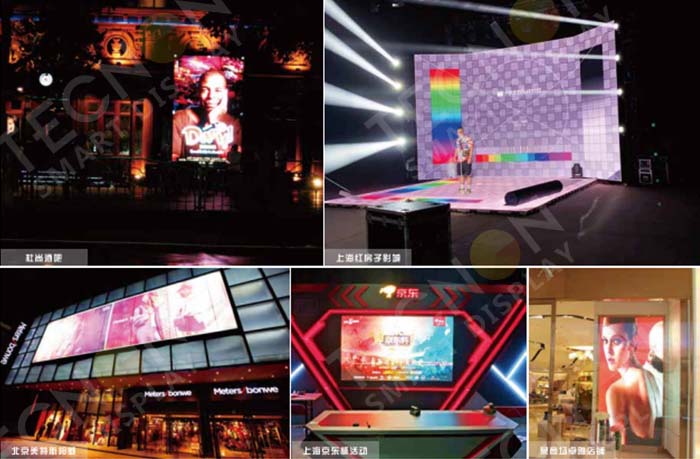
FAQs About LED Screen Structure
1. What’s the Difference Between LED Module and LED Pixel?
An LED module contains many LED pixels. Each pixel is a group of red, green, and blue LEDs that work together to form images.
2. How Does Pixel Pitch Affect Display Quality?
Pixel pitch measures the distance between pixels. Smaller pitches provide higher resolution, which is ideal for short viewing distances.
3. Can One Controller Manage Multiple Screens?
Yes. Large setups often use a sending card to distribute content to multiple receiving cards across different screens.
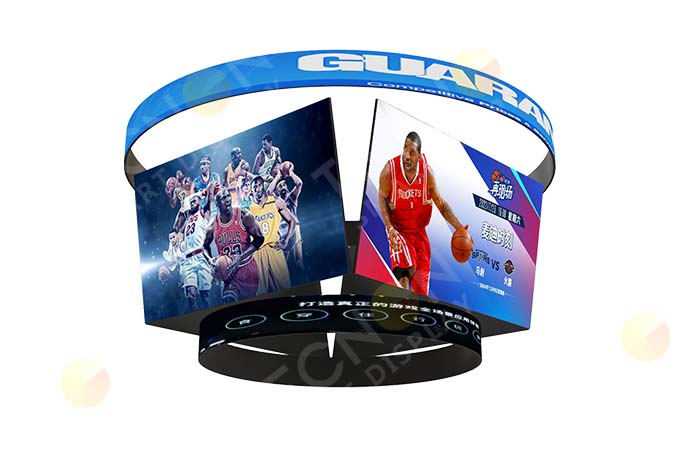
Conclusion
The LED screen structure is more than just a cabinet with lights—it’s a complex integration of visual modules, power systems, signal control, and structural support. Understanding each screen element helps you make smarter decisions, whether you’re buying a single indoor display or planning a multi-screen outdoor installation.
As a leading LED display solutions provider, we offer expert consultation, custom-built cabinets, and turnkey installations for every use case.
📩 Ready to find the right LED screen structure for your project?
 Tecnon Smart Display Technology Shenzhen Co., Ltd.
Tecnon Smart Display Technology Shenzhen Co., Ltd.